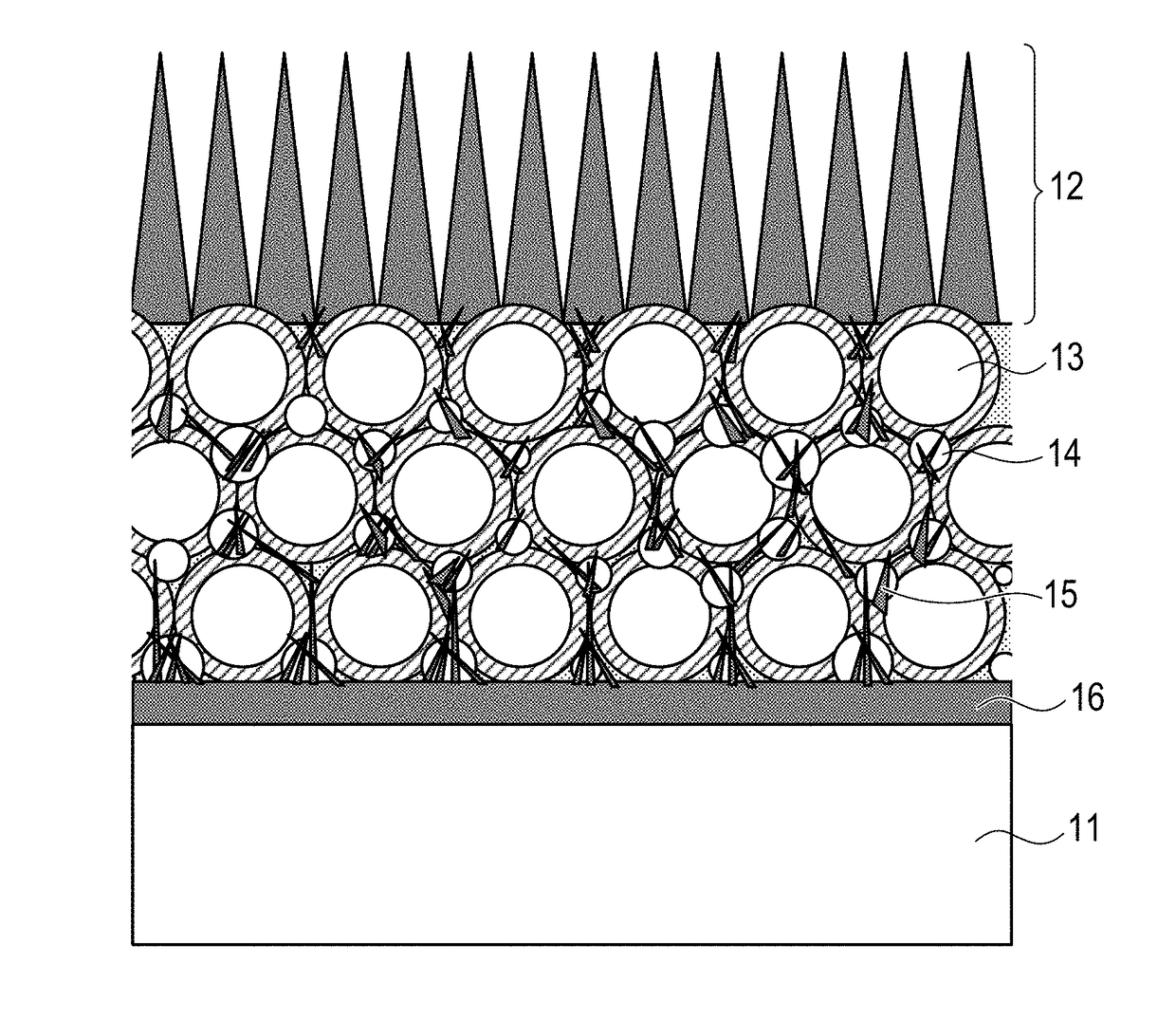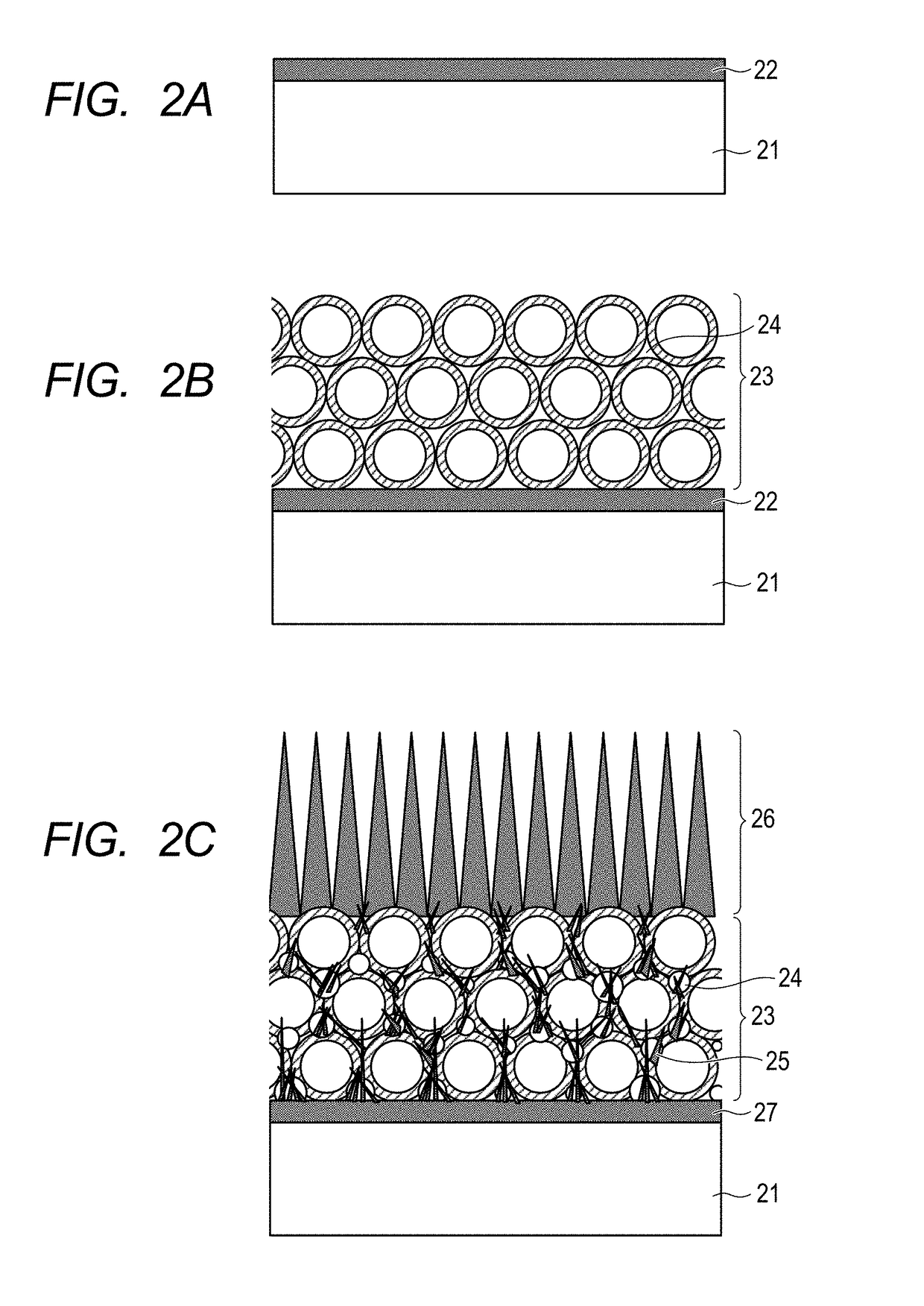Antireflection film, and optical member and optical apparatus each using the antireflection film
a technology of antireflection film and optical member, applied in the direction of instruments, coatings, optics, etc., can solve the problems of reducing production cost, requiring extremely large-scale equipment etc., and achieves effective antireflection effect, poor broadband reflectance characteristic of antireflection film, and restricted production cost
- Summary
- Abstract
- Description
- Claims
- Application Information
AI Technical Summary
Benefits of technology
Problems solved by technology
Method used
Image
Examples
example 1
[0073]In Example 1, an optical member including the antireflection film of the present invention was produced and evaluated by the following methods.
[0074](Aluminum Oxide Precursor Sol)
[0075]14.8 g of aluminum-sec-butoxide (ASBD, manufactured by Kawaken Fine Chemicals Co., Ltd.), 3-methyl-2,4-pentanedione serving as a stabilizer in an amount of 0.5 molar equivalent to the aluminum-sec-butoxide, and 2-ethylbutanol were mixed and stirred to uniformity. 0.01 M dilute hydrochloric acid was dissolved in a 2-ethylbutanol / 1-ethoxy-2-propanol mixed solvent, and then the solution was slowly added to the solution of the aluminum-sec-butoxide. The mixture was stirred for a while. The solvent was adjusted so as to finally be 59.3 g of a mixed solvent having a mixing ratio of 2-ethylbutanol and 1-ethoxy-2-propanol of 7 / 3. Further, the resultant was stirred in an oil bath at 120° C. for 2 hours to prepare an aluminum oxide precursor sol.
[0076](Hollow Particle-Dispersed Coating Material)
[0077]As a...
example 2
[0091]In Example 2, two kinds of optical members including antireflection films including particle layers having different thicknesses were produced.
[0092]After a substrate had been coated with an amorphous aluminum oxide film in the same manner as in Example 1, an application liquid of hollow particles was formed into a film by a spin coating method for 60 seconds at each of 2,000 rpm and 4,000 rpm. As a result, substrates having particle layers made of hollow particles having thicknesses of 142 nm and 105 nm formed on the amorphous aluminum oxide film were obtained. Each of the substrates was immersed in warm water at 75° C. for 20 minutes to provide an optical member of this Example.
[0093](Evaluation)
[0094]As in Example 1, the measurement results of reflectance are shown in FIG. 5. The optical member in which the particle layer formed at 2,000 rpm had a thickness of 142 nm was able to serve as an optical member satisfactory in an infrared region as compared to Example 1. In addit...
example 3
[0095](Film Formation)
[0096]In this Example, an optical member was obtained in the same manner as in Example 1 except that S-LAH55V (manufactured by Ohara Inc.) was used as a substrate.
[0097](Evaluation)
[0098]As in Example 1, the measurement result of the reflectance of the optical member of Example 3, and the reflectance of the S-LAH55V substrate used in Example 3 are shown in FIG. 6. The optical member of Example 3 was able to achieve a satisfactory reflectance over a visible to infrared region.
PUM
| Property | Measurement | Unit |
|---|---|---|
| thickness | aaaaa | aaaaa |
| thickness | aaaaa | aaaaa |
| particle diameter | aaaaa | aaaaa |
Abstract
Description
Claims
Application Information
 Login to View More
Login to View More - R&D
- Intellectual Property
- Life Sciences
- Materials
- Tech Scout
- Unparalleled Data Quality
- Higher Quality Content
- 60% Fewer Hallucinations
Browse by: Latest US Patents, China's latest patents, Technical Efficacy Thesaurus, Application Domain, Technology Topic, Popular Technical Reports.
© 2025 PatSnap. All rights reserved.Legal|Privacy policy|Modern Slavery Act Transparency Statement|Sitemap|About US| Contact US: help@patsnap.com



